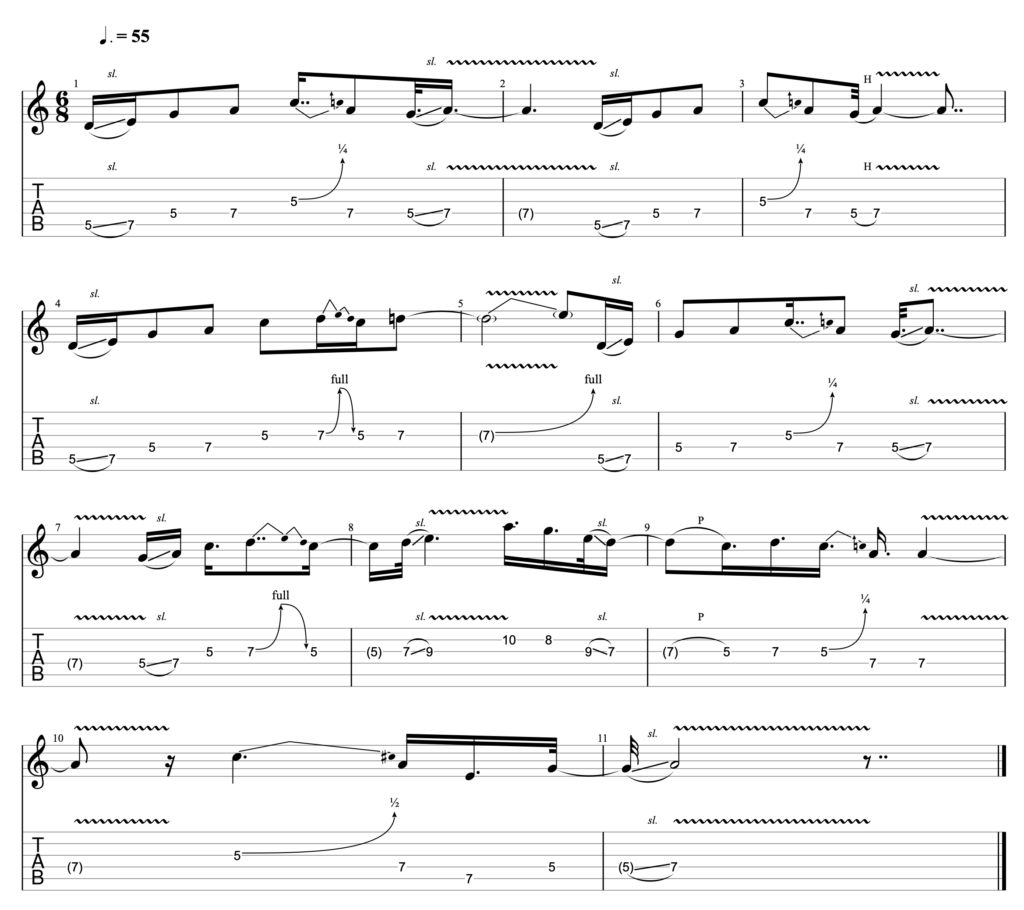Once you feel comfortable with the idea of using repetition in your solos, you can start to think about using motifs.
This is one of my favourite tips for players getting started with improvisation, as it provides benefits for both you as a player and for your listeners. It also creates a virtuous circle that makes it easier for you to craft interesting ideas.
A motif – or motive as it is sometimes called – is a short musical idea that is repeated throughout a piece of music. Through its repetition, the motif becomes a distinctive and recognisable part of the piece.
Motifs were originally used in Western classical music, where you can hear them in pieces of music like Beethoven’s Symphony No.5.
The piece famously starts out with a 4 note phrase which is then repeated throughout the symphony. When it repeats however, there is often some change to the initial idea. The motif develops and alters, and in this way the symphony tells a story and takes you on a journey, whilst never straying too far away from its opening idea.
This structure is so effective that motifs have gone on to be used in a wide variety of different genres, including the blues. Here are just some of the many blues and blues rock songs which use motifs:
- Still Got The Blues – Gary Moore
- Wonderful Tonight – Eric Clapton
- Guess Who – B.B. King
As you can hopefully hear – in each of these songs the motif provides structure and a “hook” that keeps you interested as the piece develops.
You can take this idea and use it in your blues guitar solos to provide structure, get more mileage from simple ideas and make improvising feel easier.
To help you get started using motifs in your own playing, there are 3 key ideas I would recommend keeping in mind. These are as follows:
1.) Keep it simple. The motif in Beethoven’s Symphony No.5 contains just 4 notes. Yet it is one of the most instantly recognisable motifs of all time. Don’t overcomplicate your ideas. Keep things simple and add layers of complexity as you go. In fact, I would recommend taking a phrase or idea that you already use in your playing. This will help you to feel comfortable and make it easy for you to adapt and develop that initial motif.
2.) Take your time. It is quite likely that you will feel self-conscious when you first start to implement motifs in your playing. You will feel like your solos are boring and that you are just repeating the same idea. And yet whilst you might feel this way, you need to fight the urge to move away from the motif and onto a new phrase.
You can’t really create and establish a motif without using repetition. If you don’t hang around on your initial idea for a decent amount of time, you will not give the listener a chance to recognise that what you are playing is a motif. Instead it will just sound like a lick.
3.) Sweat the small stuff. Small changes to your central idea can have a big impact on the way that it sounds. Adjusting a single note, or slightly altering your phrasing can really change the feeling of the motif. So drill down into the nuances of your playing. Focus on your dynamics, timing and the techniques that you are using to extract as much mileage as you can out of your initial idea.
I used these ideas to put together a motif which I play from around the 3.40 minute mark. Here is the tab for that section:

At the 55 BPM at which the track is played, the isolated guitar part sounds like this:
As you can hopefully hear and see in the tab – this whole section of playing is based around one central idea. Yet far from being boring, this repeated idea gives the solo a sense of structure and coherence.
If your solos currently feel like a collection of licks that are played one after the other, give this a go. It will make your improvisations sound more intentional and musical, and it will make improvising much easier and more enjoyable.
With that, these 6 tips come to a close.
It is easy to potentially dismiss material like this as being too simple. Yet these fundamentals are a core part of lead blues guitar, and will always present opportunities for improvement.
You can always use more technique, phrase in a way that is smoother and more musical, and create more memorable motifs that really stick in your ear.
So keep working on these ideas, and I promise that your playing will sound more vocal, expressive and bluesy as a result.
Good luck! And if you want a little inspiration as you get started on these ideas, head over to the next series of videos in this course, where I teach 5 bonus licks you can use in your solos.
See you over there 😁
